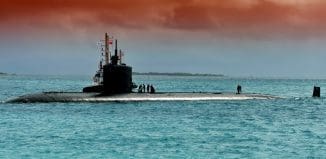Canon Launched Foldable Quadcopters
This post is also available in:  עברית (Hebrew)
עברית (Hebrew)
Researchers from Caltech and NASA’s Jet Propulsion Laboratory (JPL) have recently presented a prototype for a foldable quadcopter that takes off from a canon. The Streamlined Quick Unfolding Investigation Drone (SQUID) is a canon launched drone, that when launched the drone unfolds itself and flies off.
SQUID has been developed in order to save time and simplify the takeoff process of traditional quadcopter drones. Most quadcopter drones can only takeoff when stationary and, in the case of larger quadcopters, only from areas clear from debris or obstacles.
In contrast to traditional quadcopters, SQUID can be launched from moving vehicles traveling at speeds over 50 miles per hour. This allows first responders to launch drones while on the move while responding to an emergency. Similarly, coast guards traveling by boat in wavy waters or even aircraft in flight are also capable of launching the SQUID in order to quickly obtain intelligence and increased situational awareness before operations.
The SQUID prototype is also planned to be used to explore and research other planets.
The SQUID prototype is about 27 centimeters long with an 8 centimeter diameter when folded. It weighs about 530 grams and is launched at about 15 meters per second from a gas powered baseball pitching machine. Immediately after the drone is launched, a wire heats up and burns through the lines holding drone’s arms folded. The arms are then retracted by springs and the drone begins to fly on its own.The drone’s propellers begin to spin about 200 milliseconds after launch and can be controlled by the operator about 1 second after launch.
The SQUID’s design is easily scalable with Spectrum.ieee.org mentioning that the researchers are also working on smaller (5 centimeter diameter) and larger (15 centimeter diameter) prototypes. The larger SQUID will be big enough to carry larger batteries, sensors, and more advanced payloads, thus making it even more useful for military and law enforcement applications.






























